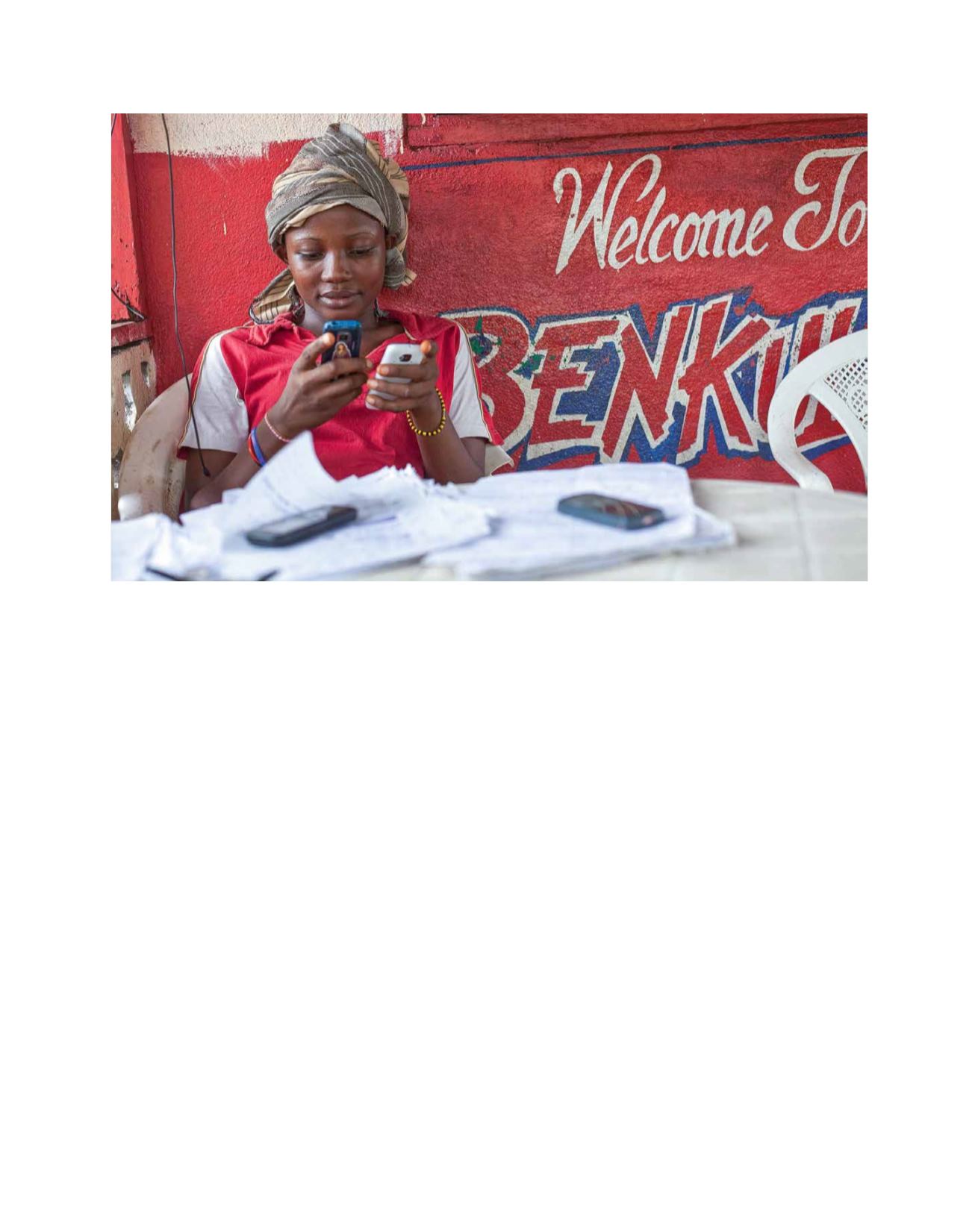

[
] 30
Image: UNESCO/Nokia
A woman practises reading and writing on her mobile phone
divide is primarily responsible for women’s economic situa-
tion: “the reason why fewer women access and use ICT is a
direct result of their unfavorable conditions with respect to
employment, education and income. When controlling for
these variables, women turn out to be more active users of
digital tools than men.”
But change is taking place. UNESCO’s PAJEF initiative was
a part of a larger project called the Global Partnership for Girls’
and Women’s Education
4
and its aim was to increase learning
opportunities for adolescent girls, addressing in particular two
challenging areas: secondary-level schooling and literacy. A
United Nations-International Labour Organization project in
Tanzania enables women to start and expand their businesses
by using smartphones.
5
In Zambia, young women began using
Twitter and Facebook to stop gender-based violence.
6
The phone’s role in fighting illiteracy and lifting women
out of poverty is one side of the equation. The other side is to
ensure that women can take part in the design and produc-
tion of the hardware and software of these new technological
marvels. It is a well-known fact that girls lag in science, tech-
nology, mathematics and engineering (STEM) education
across the globe. In the US in 1985, 37 per cent of computer
science graduates were women whereas in 2009, that figure
went down to just 18 per cent. The highly influential Institute
of Electrical and Electronic Engineers has 407,000 members
and only 10 per cent of these are women. Globally, the
percentage of women engineers hovers between 10 and 20
per cent. Moreover the women who are employed in these
fields earn 33 per cent less than their male colleagues.
In 2015, UNESCO partnered with two other United Nations
agencies, namely the United Nations Entity for Gender
Equality and the Empowerment of Women and the United
Nations Population Fund, to introduce the Joint Programme
on Empowering Adolescent Girls and Young Women through
Education.
7
UNESCO expects to reach over 500,000 girls in 20
countries in the next five years. The project includes, among
others, substantial STEM and health components: “Activities
will be strategically built into the interface between educa-
tion, health, skills development, technology and women’s
economic empowerment.”
Finally, in 2016, UNESCO and the US Mission to UNESCO
created a public-private partnership to launch a new initiative
called TeachHer.
8
Their starting point was the realization that
if girls are not introduced to science, technology, engineering,
arts/design and mathematics (STEAM) fields between the ages
of 13 and 16, they are highly unlikely to pursue a university
degree in them. To rectify that situation UNESCO and its part-
ners will train Master Teachers in STEAM in the developing
world. These Master Teachers will train others in an effort to
give adolescent girls access to STEAM careers.
Rokhaya was the human face of the empowering and life-
changing effect of education and technological tools like
the phone. The goal should be to close the circle by giving
Rokhaya’s daughters access to STEAM fields and having them
participate in the creation, design and development of the
next computer program, smartphone application or the hard-
ware that runs them all.
Rokhaya would be proud.
A B
etter
W
orld
















